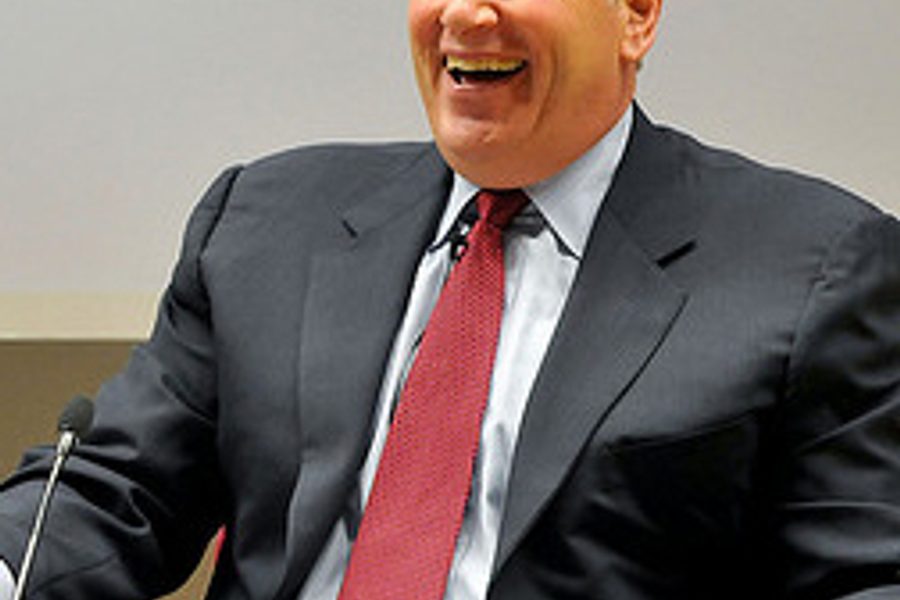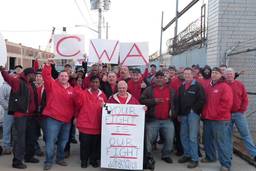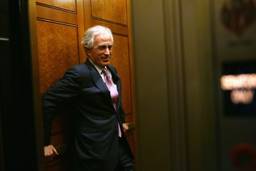“Dave Cote is feeling the beat. He takes a sip of Mountain Dew and bobs his head in time to the throbbing bass of Jay-Z’s “Hard Knock Life.” So begins a Fortune magazine profile titled “How Dave Cote Got Honeywell’s Groove Back.”
As someone who has covered Honeywell’s unionbusting — especially at an Illinois uranium processing plant—for the last two years, I found the long profile by Fortune Senior Editor-at-Large Shawn Tully fascinating. Tully was granted the type of access to Honeywell CEO David Cote and his closest friends and business advisors that reporters like myself, who focus not on profits but on how businesses treat workers, would love to have.
Tully’s profile is filled with entertaining stories about Cote. It talks about how he grew up the son of a mechanic and played the accordion as a child. It chronicles how, as a low-level GE auditor, Cote was found and mentored by CEO Jack Welch, who was impressed by Cote because of his “refusal to bad-mouth his superiors” and later recommended him to head Honeywell about 10 years ago. Now, Tully writes:
Honeywell (HON) ranks as a top performer among the diversified industrials, starting with how it has rewarded shareholders. Since the start of 2003, Honeywell’s stock has surged from $24 to $60. Investors have reaped a total return, including dividends, of 215%. That puts Honeywell in second place among industrial conglomerates…
And why exactly have Honeywell investors done so well? In large part because Cote has sytematically reduced the company’s “labor costs,” i.e, how much it pays workers. Tully writes:
Cote saw that labor costs for everything from aircraft power generators to fire alarms were far higher than those of competitors — a situation he couldn’t abide. He added an extra dimension to create what’s now the revered Honeywell Operating System, or HOS. Cote demanded that his troops replicate Toyota’s manufacturing practices — in Cote’s mind, the best in the world. He dispatched 70 managers to Toyota’s plant in Georgetown, Ky., to master techniques for speeding output with the leanest workforce possible.
The rewards have been spectacular. Since 2002, Honeywell has increased its headcount just 21%, vs. an increase in sales of 72%. By keeping fixed costs like labor relatively flat, Cote generates “operating leverage” that magnifies brisk revenue growth into outsize earnings. …
But Tully doesn’t interview a single union Honeywell worker that has been involved in one of the company’s numerous concessionary union contract struggles since Cote took over. Instead, he talks to Cote’s friend Vernon Jordon, super lobbyist and Bill Clinton adviser, who criticizes Cote for wearing jeans to business meetings, and his next door neighbor Jim Cramer, the former hedge fund manager and host of CNBC show Mad Money.
There is a brief quote from a former GE worker who disliked Cote’s approach to unions when Cote ran GE’s appliance division during the mid-1990s, but there is no interview with a current Honeywell worker. Tully doesn’t even note that Honeywell, the top corporate PAC donor to the Democratic Party in 2010, has pushed for concessions in three different strikes or lockouts since President Obama took office. (I explored connections between Honeywell and the federal government last year in a story titled “Is the Federal Government Helping to Bust Unions?”)
Curious as to why workers and tumultuous ongoing labor struggles are so absent from a 3,000-word profile, I e-mailed Tully, saying I wanted to talk to him about Honeywell’s relations with unions. Tully responded: “Mike, I don’t know anything about Honeywell’s labor relations.”
This statement reveals what is wrong with so much journaism right now. Business reporters suck up to CEOs like Honeywell’s Dave Cote, and in exchange they get access and entertaining stories for long celebratory profile articles. What’s missing is any description of exactly how Honeywell lowered its labor costs — locking out workers, concessionary bargaining, driving down wages and benefits. Instead, readers walk away from the article with a vision of Cote and Honeywell akin to Steve Jobs and Apple. The piece details Cote’s eccentric management process as key to turning around the company:
Every few months, Cote sets aside a day to sit alone in his office reflecting on Big Ideas. He turns up the iTunes and doesn’t take phone calls. It was during these solitary sessions that he decided to concentrate on the three grand themes of energy efficiency, energy conservation, and safety.
Sure, what Honeywell makes isn’t as sexy as iMacs and iPhones, but at least Cote is wearing jeans to work and having monthly iTunes shuffle sessions in his office to creatively meditate on how his company can continue to take on the world. Just as with coverage of Jobs and Apple (at least until Foxconn scandals broke), Tully focuses on genius CEOs instead of detailing how they use the oldest trick in the corporate book to increase profits: exploit workers.









